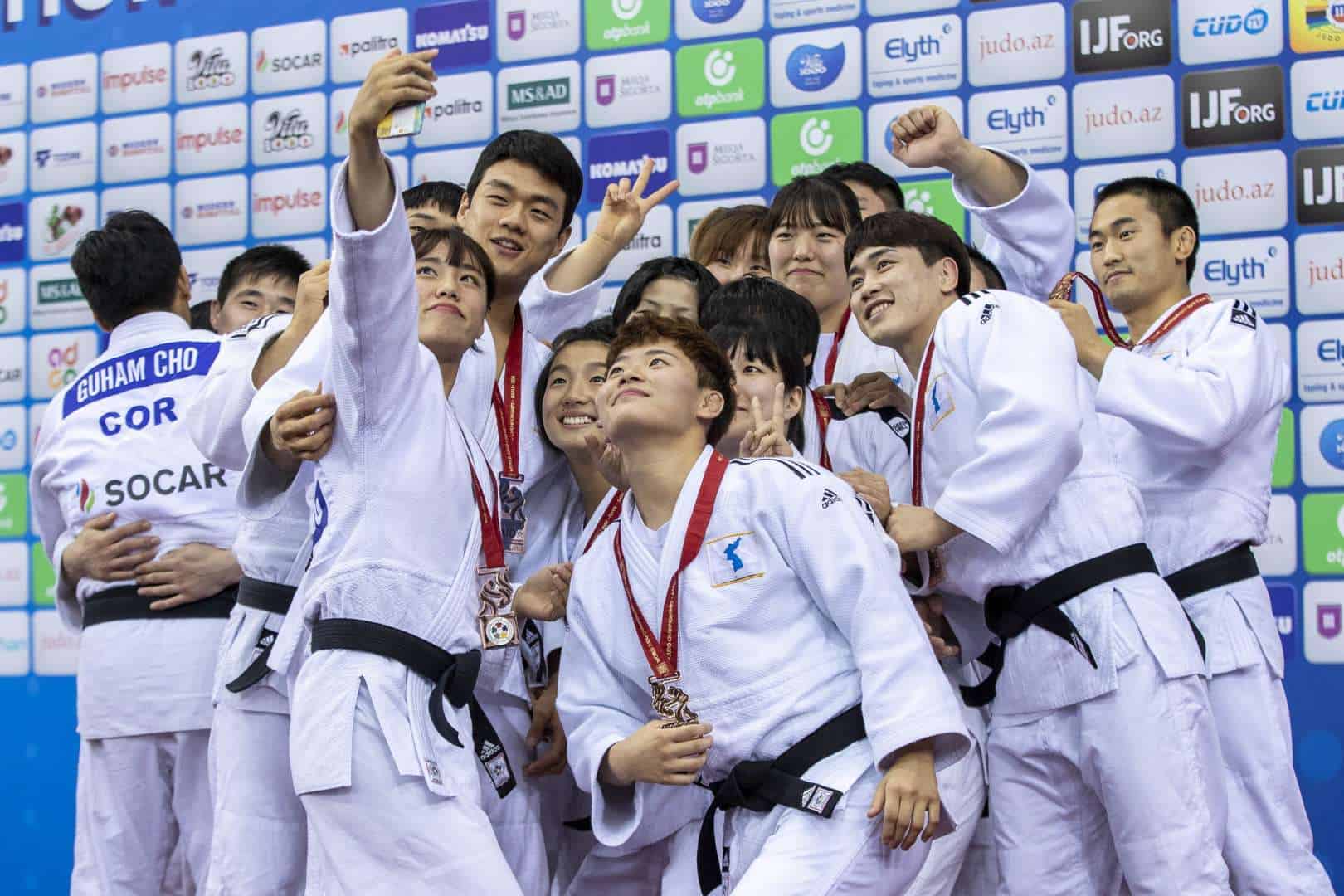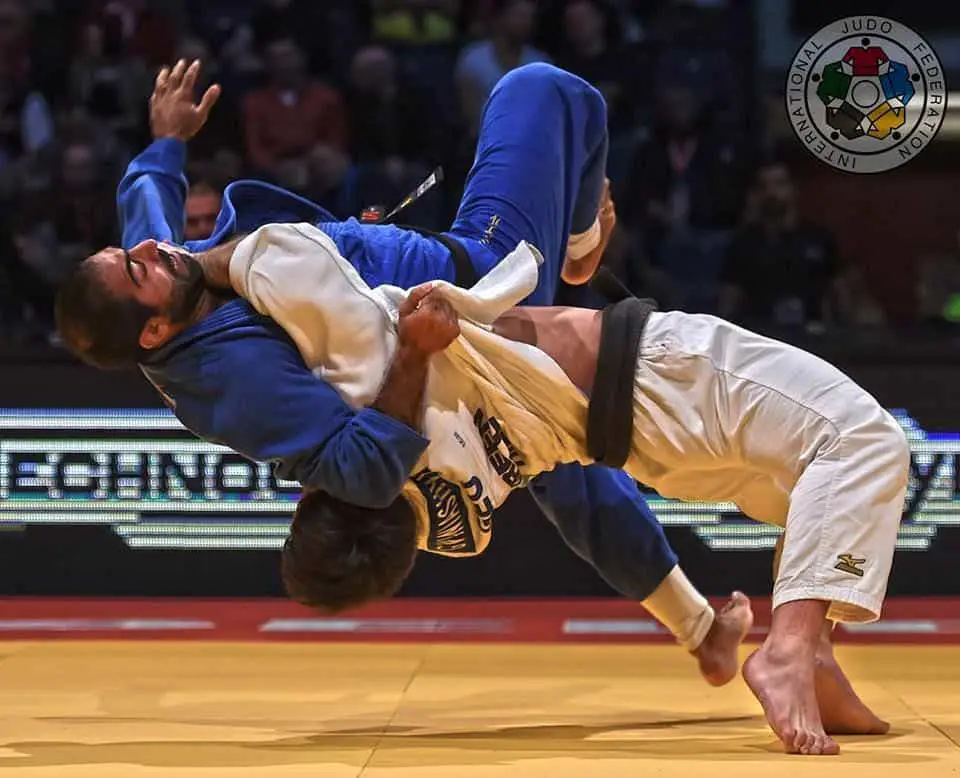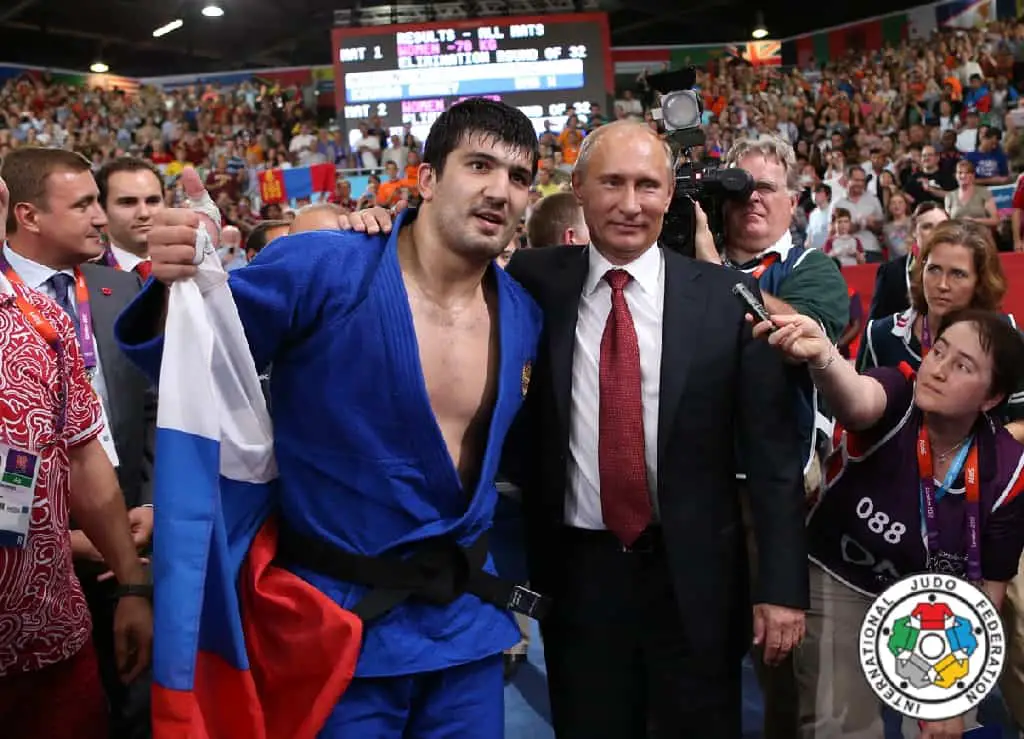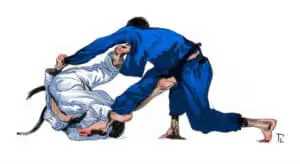Maybe you have seen Judo on the TV or you have a friend who trains. Now you are thinking of trying out Judo and have lots of questions running through your mind. What happens at Judo training? How is the training structured? How is Judo taught? We will explain all your questions surrounding Judo training so when you turn up to your first practice you will be prepared and ready to go.

What is Judo training like? Judo training typically lasts for 1.5 – 2 hours. Judo training begins with a warm up (30 mins) consisting of jogging, basic gymnastic movements and Judo specific exercises. Then your coach will demonstrate different techniques (throws, pins and submissions) and you will partner up and practice those techniques (60 mins). Finally you will finishing training by sparring against your training partners (30 mins).
What To Do Before Judo Training Begins?

As you enter your Judo gym you should make a standing bow. The bow is a sign of respect to the gym and also a way to signal to your body to get ready for training and to clear your mind of distracting thoughts. Before you enter the mat you must take off your shoes and again perform a standing bow before stepping onto the mat.
Before training starts you will line up in rank, with the lowest rank on the left hand side and highest rank on the right hand side. Your coach will be in front of the line of students. You will kneel as your coach addresses you. After he addresses the class you will bow to your coach and then you are ready to begin the warm up.
How To Warm Up For Judo?

Judo warm ups usually last for 30 mins and consist of jogging around the mat, calisthenics such as push ups and situps, gymnastic movements such as cartwheel, hand stand, forward roll, Judo exercises such as hip escape, throw entries and stretching.
Here is an example of a typical Judo warm up:
- Jogging and different Running exercises (10 mins) – high knees, kickbacks, skipping, running backwards, carioca, sprints
- Calisthenics (5 mins) – pushups, situps, Judo pushups, bridge, head stand, squats, Hindu squats
- Gymnastic Movements (5-10 mins) – forward roll, backward roll, walking on hands, cartwheel, head spring, front flip, back flip, round off, hand stand
- Judo Exercises (5-10 mins) – hip escape, throw entries
- Stretching (5 mins) – neck, shoulders, back, knees, hamstring, ankles, calves
A Judo warm up is designed to get your body ready to perform the movements during Judo training. You should be sweating and your heart rate should be elevated. Warming up your muscles increases your mobility and decreases the chance of injury particularly sprains and tears.
As Judo utilizes all the muscles in the body a Judo warm up needs to be all body. A Judo warmup should also allow students to practice specific Judo movements to help their technique progress.
How To Practice Judo Throws?

To practice throws your coach will choose a student usually a high ranking student. He will ask you and training partners to gather around in a circle. He will then perform the throw on the chosen student. He will perform the throw a number of times and explain the details. He will then ask you and your training partners if you have any questions. After watching the throw demonstration you will partner up and attempt to perform the same technique your coach showed you.
When performing the technique you and your training partner will not offer any resistance. To help your training partner perform the throw you can lean into them to make your body weight lighter.
Don’t worry if you can’t get the technique at first. Throws have many steps and are difficult to perform. If you are having problems performing the movement feel free to ask senior students or your coach for advice. They will be happy to help you.
Your coach will typically be walking around the gym giving words of encouragement and helping students improve their technique.
After the coach is satisfied that the students are performing the throw correctly he will stop the class and get the students to gather around as he demonstrates another technique. A coach will typically demonstrate 6 + techniques per training session. This is the major part of the training session and usually lasts for an hour or more.
When you are performing a throw for the first time remember to slow it down, follow all the steps, maintain solid balance and incorporate criticism from your coach and senior students. If you follow these tips you will be executing flawless throws in no time.
How To Do Randori In Judo?

After you have practiced some different techniques it is time to put those techniques to the test during sparring also known as Randori. During Randori you will have mock matches against your training partners where you will attempt to throw, pin and submit them.
Randori rounds will typically mirror competition matches and your coach will set a 5 min timer. You may be free to decide your partner or sometimes your coach will pair you up. You will bow to your partner and when the timer starts you will begin sparring.
You should match the intensity of your opponent. Typically during Randori Judokas will spar at between 65%-90%. It depends on the purpose of the Randori. If it’s your first time take things slow and try your best to use the techniques you have been taught. Do not focus on winning but rather on using your Judo technique to the best of your ability.
Randori is an extremely important part of training as if you can not perform your techniques against resistance then you do not really know Judo. Judo is a martial art and it is only effective if the throws can be performed against an opponent who is defending. Do not feel discouraged if you struggle to score any attacks in your first few times performing Randori. After a few months of practice you will be consistently throwing your training partners.
Randori can be nerve wrecking and exhausting if you are a beginner. Make sure to stay relaxed and to take consistent slow and controlled breaths. Many inexperienced Judokas become very tense and forget to breathe resulting in them becoming exhausted within a couple of minutes. If you stay calm you will be surprised at how long you can spar without becoming tired.
ONO Shohei (Olympic Gold Medalist) Randori 2020 Highlights
What Happens After Judo Training?

After Judo training has finished you will line up again just like you did at the beginning of training. Your coach will address you and your training partners. You will bow to your coach and thank your training partners. Then you will be able to leave the mat. Make sure you bow as you step off the mat.
Conclusion
Judo training is great fun. Judo training follows the same structure no matter where you train. It begins with a warm up consisting of jogging, calisthenics, gymnastic and Judo exercises, then you will practice throwing your training partner without resistance and finally you will spar and have mock matches against your training partners to see if you can perform your Judo techniques against resistance. After reading this article I hope you will be prepared for your first Judo training session. Good luck with your Judo journey
